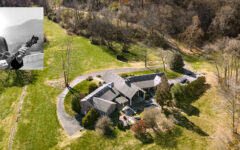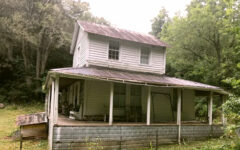 As reported earlier veteran singer/multi-instrumentalist Bill Harrell passed away on June 24 at his home in Davidsonville, Maryland. He had suffered a stroke on June 12 and was hospitalized for a week. His health was further complicated by advanced prostate cancer, an enlarged heart and fluid on his lungs.
As reported earlier veteran singer/multi-instrumentalist Bill Harrell passed away on June 24 at his home in Davidsonville, Maryland. He had suffered a stroke on June 12 and was hospitalized for a week. His health was further complicated by advanced prostate cancer, an enlarged heart and fluid on his lungs.
Born in Marion, Virginia, on September 14, 1934, Harrell had a recognizable vocal style, light and mellow in tone, in a bluegrass music career that started during his college years when he began playing mandolin in a trio. Prior to that he learned to play the piano and to read music.
Subsequently he played with several Washington, DC area musicians like Eddie Adcock, Donny Bryant, Smiley Hobbs, Smitty Irvin, Carl Nelson and Roy Self, during stints with bands such as the Rocky Mountain Boys.
While serving in the armed forces, Harrell was injured in an auto accident, and spent close to a year recovering in a military hospital. Upon his release, he returned to Washington, DC and formed a group that released three singles on the Starday label. Subsequently he formed the Virginians with Irvin on banjo, Buck Ryan on fiddle and Stoney Edwards on bass and in 1963 released the album The Wonderful World of Bluegrass Music (United Artists). This was followed two years later with Ballads and Bluegrass (Adelphi). The group played dates up and down the East Coast of America and Harrell hosted his own weekly television program from Harrisonburg, Virginia, and the group were frequent guests on Jimmy Dean’s network TV series.
In December 1966, Harrell joined Don Reno and the Tennessee Cut-Ups, remaining Reno’s partner for over a decade; a period in which saw the rise in popularity of bluegrass music festivals. Reno and Harrell recorded several albums for a variety of established labels, like King, Starday and Monument, as well as smaller ones such as Jalyn, King Bluegrass and CMH (recently formed at that time).
 Early in 1977 Harrell and bass player Ed Ferris amicably left the Tennessee Cut-Ups to re-form the Virginians with Harrell’s old friend Carl Nelson on fiddle and newcomer Darrell Sanders on banjo. The following year the band released their first album Bluegrass and Ballads (Adelphi), followed by the back-to-back albums Bluegrass Gospel, Pure and Simple (Leather) and I Can Hear Virginia Calling Me (Rebel), in 1980. By this time mandolin player Larry Stephenson had joined the band also. These albums were followed by another album for Leather, The L&N Don’t Stop Here Anymore (in 1981). Despite a constantly changing line-up, Harrell continued to lead the Virginians well into the 1990s, issuing excellent records like Walking in the Early Morning Dew (1983), Blue Virginia, Blue (1986) and After The Sunrise (1990); all for Rebel Records.
Early in 1977 Harrell and bass player Ed Ferris amicably left the Tennessee Cut-Ups to re-form the Virginians with Harrell’s old friend Carl Nelson on fiddle and newcomer Darrell Sanders on banjo. The following year the band released their first album Bluegrass and Ballads (Adelphi), followed by the back-to-back albums Bluegrass Gospel, Pure and Simple (Leather) and I Can Hear Virginia Calling Me (Rebel), in 1980. By this time mandolin player Larry Stephenson had joined the band also. These albums were followed by another album for Leather, The L&N Don’t Stop Here Anymore (in 1981). Despite a constantly changing line-up, Harrell continued to lead the Virginians well into the 1990s, issuing excellent records like Walking in the Early Morning Dew (1983), Blue Virginia, Blue (1986) and After The Sunrise (1990); all for Rebel Records.
Shortly afterwards, Harrell retired and son Mitch, who was already by that time a member of the Virginians, took over the band.
In a career that spanned over 30 years and is noted for his relaxed, easy-going style of traditional bluegrass, Bill Harrell was a major contributor to the growth of bluegrass music in the Washington DC area. He performed for three presidents; Nixon, Reagan and Bush.
Last year the IBMA honored Harrell with a Distinguished Achievement Award, presented to him by Larry Stephenson.







